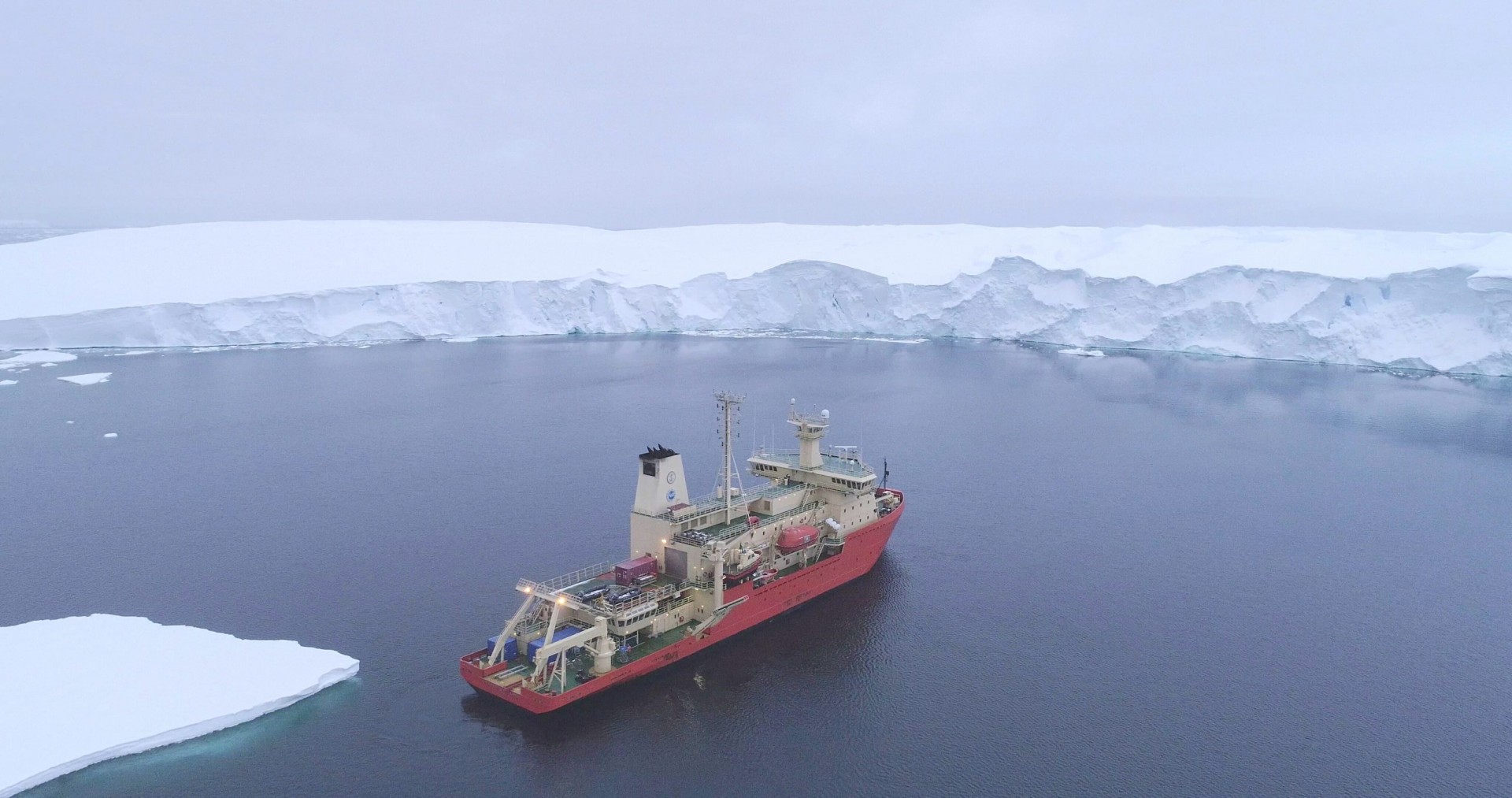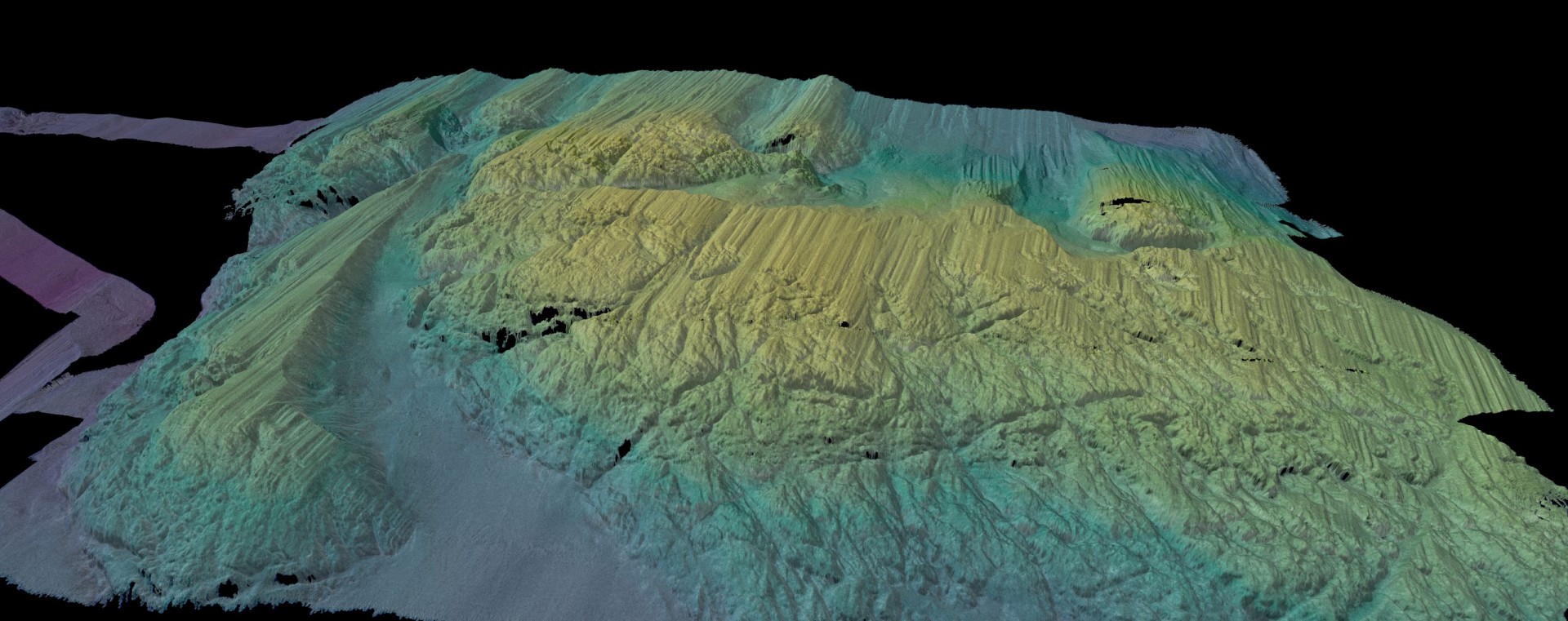Fast-Wasting Antarctic Glacier Lost Ice Even Faster in Past, Raising Concerns for Future
Some time in the past 200 years, Antarctica’s giant Thwaites Glacier saw a period of retreat much faster than even that observed in recent years. It could be a warning of rapid sea-level rise in the near future.
The Thwaites Glacier in West Antarctica, about the size of Florida, is an elephant in the room for scientists trying to make global sea-level predictions. The massive ice stream is in fast retreat—actually in a state of collapse, when viewed on geological timescales. This has led to widespread concern about how fast it may give up its ice to the ocean. The potential impact is spine-chilling: total loss of the Thwaites and surrounding icy basins could raise sea levels from 3 to 10 feet. Now, a new study in Nature Geoscience adds cause for concern.
In the study, for the first time, scientists mapped in high resolution a critical area of the seafloor in front of the glacier. The team documented more than 160 parallel ridges that were created, like footprints, as the glacier’s leading edge retreated and bobbed up and down with the daily tides some time within the last 200 years. Alarmingly, the rate of retreat evidenced by the ridges is much faster than what scientists have documented more recently.
To understand Thwaites’ past retreat, the team analyzed the rib-like formations submerged 700 meters (just under half a mile) beneath the polar ocean and factored in the tidal cycle for the region, as predicted by computer models. This showed that one rib must have been formed every single day. At some point, over a period of less than six months, the front of glacier lost contact with a seabed ridge and retreated at a rate of more than 2.1 kilometers per year (1.3 miles)—twice the rate documented using satellites between 2011 and 2019.

“It’s as if you are looking at a tide gauge on the seafloor,” said lead author Alastair Graham of the University of South Florida. “Our results suggest that pulses of very rapid retreat have occurred at Thwaites Glacier in the last two centuries, and possibly as recently as the mid-20th century,” he said.
“Thwaites is really holding on today by its fingernails, and we should expect to see big changes over small timescales in the future,” said study coauthor Robert Larter of the British Antarctic Survey.
The research team included Frank Nitsche of the Columbia Climate School’s Lamont-Doherty Earth Observatory, along with other scientists from the United States, the United Kingdom and Sweden.
To collect the imagery and supporting geophysical data, the scientists launched a robot loaded with sensors from the U.S. icebreaker Nathaniel B. Palmer during a 2019 expedition. The robot embarked on a 20-hour mission that was as risky as it was serendipitous. It mapped an area of the seabed in front of the glacier about the size of Houston during a summer notable for its lack of sea ice, allowing scientists to access the glacier front for the first time in history. The expedition itself is described by the scientists in a companion paper.

Graham said the team would like to sample the seabed sediments directly so they can more accurately date the ridge-like features. “The ice closed in on us pretty quickly and we had to leave before we could do that,” he said.
Scientists used to think of the Antarctic ice sheets as slow to respond to climate conditions, but that is no longer the case, said Graham. “Just a small kick to Thwaites could lead to a big response,” he said.
The study is part of a long-term international collaboration to study the Thwaites, and inform global efforts to plan for sea-level rise. According to the United Nations, roughly 40 percent of the human population lives within 60 miles of the coast.
The study was supported by the U.S. National Science Foundation and the UK Natural Environment Research Council.
Adapted from a press release by the University of South Florida.
